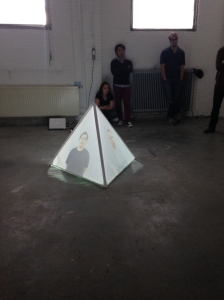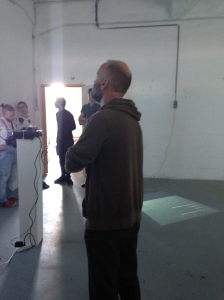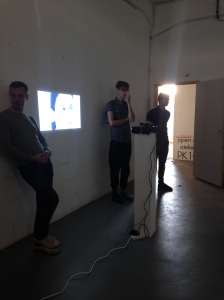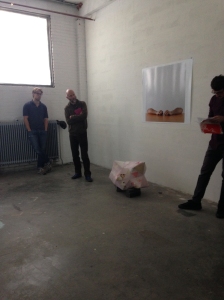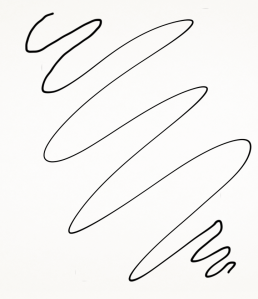What happened during the workshop week Politics of Installation? Jack Segbars wrote a small recap on this week’s work process, findings (and some images, too).
Proceedings
The participants were first asked to present there work in a general sense and to give an overview of their recent projects. In their presentation they also had to focus on the topic at hand: how do you relate your work and artistic practice vis a vis its mode of dissemination, (institutional/spatial) exhibition formats, presentation and publication and? How is the work informed, structured, projected and presented concerning these qualities?
Duo
After these presentations the students teamed up in duo’s by choice, depending on overlap, communality or productive relation (methodically or conceptually) to one another. The assignment was to jointly, working with elements in each others work, come up with a presentation that would address the topic of the workshop. What is needed to bridge different modes of artistic methods of the individual participants into one presentation? In this way issues of authorship/coöperation immediately emerge, and are made operational vis a vis the topic in general.
Results
The results were, as could be expected, very diverse. A lot of effort was made to thoroughly investigate ones stance towards the topic, and the way one wants to work mediating this stance in a coöperative set-up of. This element further enhanced the need to be precise.
How can one maintain one’s own idea’s in a coöperative endeavour? How is it maintained, how adaptable can one be? Issues of control, authorship arose. Mutual overlap in affinities or approach led to the search for one’s specific take or expertise that could be brought into the joint presentation.
Most teams came up with solutions that radicalized and accentuated their respective individual artistic ideas. Some focussed on the institutional aspects and worked with those, while others used the this aspect to redirect the audience’s attention to a more subjective and personal narrative.
Some teams moved in-between these two poles, intricately weaving the qualities of the general and the subjective. The coöperation mostly proved fruitful and productive, showing that students are comfortable with the idea of working in a group, countering the accepted notion of the artist as ego-driven agent by necessity.
Thank you Jack Segbars, all students, tutors, and Atelierbeheer Den Bosch for providing us with generous workspace!


